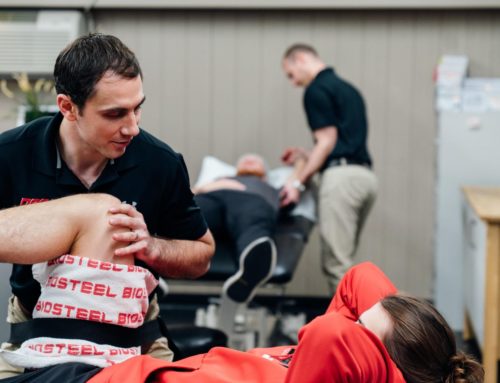Training for “performance” related goals is an oft-intimidating thought for a vast majority of the general population. But it doesn’t have to be. In fact, training for performance related goals should be something that everyone should be striving for! What exactly does that mean…
When we train for performance, we are training for what our bodies can accomplish instead of what our bodies look like. Training for strength and athleticism so that we can keep up with our children and/or grandchildren, instead of training solely for the purposing of developing a more sculpted body part. Training for resiliency and injury prevention, instead of training for the sole purpose of squeezing into a smaller dress size or slimmer jeans. Training to improve overall health and wellness (physically, mentally and emotionally), instead of training to punish ourselves for the social event that we attended on the weekend. It’s a thought process that a lot of people could benefit from switching to, and once bought-in, can elicit a lot of the aforementioned benefits discussed above as a secondary benefit (becoming more empowered, reducing injury risk, getting strong and athletic, while simultaneously burning off the weekend social event AND allowing you to fit into a smaller dress size without actively having to think about it as your sole training goal? WINNING!)
Here is a sneak peek into what you might expect to see during a lower body training day:
Movement Tasks
Beginning each workout with 5-10 mins of movement tasks can sometimes make all of the difference in reducing your risk of injury and improving your resiliency during the other 23 hours of your day. Here is a sample “warmup” we might utilize on lower body days to expose us to a few new movements while simultaneously tackling some lower-level athletic tasks.
Perform 6-10/side for each movement, 30 seconds each for 3-point balance and 3-point Jump and Stick.
Strength Tasks
Focusing on a variety of exercises for improving strength is an excellent ‘preventative’ measure for reducing risk of injury and improving our ability to perform to our physical potential. Strength doesn’t need to be intimidating either – there are TONS of options that you can utilize for getting strong.
Perform a few warmup sets in the 5-6 rep range, and gradually progress your weight in order to safely max out in the 3-5 rep range for 1-2 sets. Look too tough? Have no fear! Try the same rep scheme with Goblet Box Squats instead (see below), and gradually build your confidence to perform Anderson Back Squats if physically able.
Accessory Tasks
Our goal with the ‘accessory’ component of the workout is to address a variety of tasks, depending on the current phase of training we are working through. Sometimes, these tasks could focus on loaded movement tasks aimed at keeping as healthy; other times they are aimed at improving an area of weakness with one of the primary lifts; and sometimes they are aimed at building lean muscle mass or power development. For instance, with this superset below, we are emphasizing groin strength throughout a full range of motion in order to reduce risk of injury.
Perform 5-6 reps per leg, emphasizing a 5 second lowering as you work your way through a full range of motion. Once complete, perform a side groin plank on the same leg for 20-30 seconds. 2-3 sets.
Conditioning
We then finish each workout with some form of ‘conditioning’, aimed at burning calories and improving both aerobic and anaerobic capacity. This could be an athletic related task or challenge, or could be more circuit-style in nature depending on the phase we are currently working through. Regardless of the task at hand, exercises can always be modified and regressed as needed for each individual.
Questions or inquiries? Interested in trying it out for yourself? Email [email protected] for more information!
Written by: Ian Schnarr, Personal Fitness Manager, Senior Strength & Performance Coach






